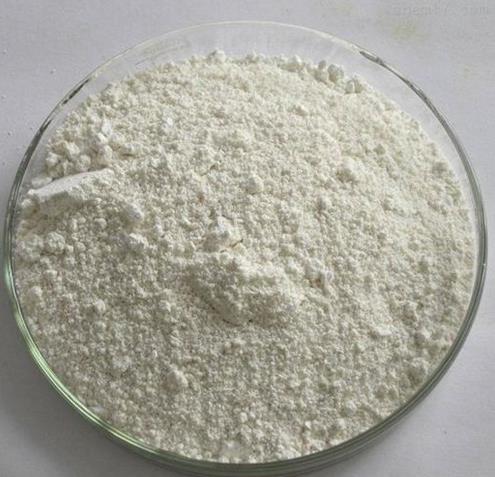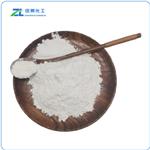Alpha-Amylase: A Key Enzyme in Chemistry and Biotechnology
Introduction
alpha-Amylase, also known as amylo-1,4-didextrinase, is officially named alpha-1,4-D-glucan-glucoside hydrolase. When it acts on starch, it can randomly cleave the alpha-1,4-glucoside bonds from the interior of starch, glycogen, oligomers, or polysaccharides molecules to produce maltose, oligosaccharides, glucose, etc. It is one of the most widely used enzyme preparations in industrial production; It cannot hydrolyze the alpha-1,6 bond of amylopectin, nor can it hydrolyze the alpha-1,4- bond adjacent to the 1,6 branching point, as well as maltose. However, it can hydrolyze oligosaccharides containing three or more alpha-1,4-glycoside bonds. Due to the reduced terminal glucose residue C1 carbon atom of the hydrolysis product being in the alpha configuration, it is called alpha-amylase.

Figure 1 Characteristics of alpha-Amylase
Biochemical/physiological effects
alpha-Amylase can hydrolyze the alpha - (1,4) glucan bonds of polysaccharides composed of three or more alpha - (1,4) linked D-glucose units. Natural substrates such as starch and glycogen are broken down into glucose and maltose. Pig pancreatic alpha-amylase is a glycoprotein composed of a polypeptide chain of approximately 475 residues (containing 2 SH groups and 4 disulfide bonds) and a tightly bound Ca2+(necessary for stability). The optimal pH is 7.
Application area
1. Food processing: As a safe and efficient improver in the noodle industry, it can improve the quality of bread. Alpha-amylase has liquefaction and saccharification functions and is often used as a sweetener in the beverage industry. In cold drinks, reducing the viscosity and increasing the fluidity ensures the taste of high-starch cold drinks. High-temperature alpha-amylase, as a new type of liquefying enzyme preparation, is widely used in the fermentation industry. Its thermal stability is determined by the thermal stability of the protein itself, so it is widely used in the alcohol and beer brewing industries
2. Feed industry: Adding exogenous alpha-amylase to feed can help young animals digest and utilize starch, and its growth performance and feed conversion rate are very beneficial. Adding live E. coli cultures that produce alpha-Amylase to broiler diets can act as antibiotic growth promoters, improve intestinal morphology, and enhance production performance.
3. Pharmaceutical industry: Due to the acid resistance of Aspergillus niger alpha-amylase, it can be used to manufacture drugs that aid digestion. Develop acid-resistant alpha-amylase suitable for acidic gastric environments for the preparation of digestive aids.
4. Paper Industry: Starch enzymes are mainly used in the paper industry to improve the viscosity and concentration of starch coating on Chemicalbook paper. Paste is a great paper coating that can improve the hardness and strength of paper, and enhance its friction resistance. However, the natural starch concentration is too high for paper sizing, so partial degradation of starch by alpha-amylase can be used to regulate it.
Heat-resistant alpha-Amylase degradation method
Starch granules are identified by the stains and the extinction cross(Maltese cross), which can be seen under the polarized light to date. However, both methods have their defects and ancient starch cannot be identified accurately this way. Considering the thermostable alpha-amylase, which is specifically to degrade starch, it is an effective method to identify ancient starch with this enzyme. Two kinds of modern starches from barley and lotus root were chosen for degradation with the thermostable alpha-amylase. They were both degraded and the rates of degradation of the two samples were different. The result may show that the rates of degradation from different plants should be different. Meantime, although most of the starch granules from barley and lotus root were degraded completely after twenty minutes and one hundred and twenty minutes of heating respectively, there survived some smaller granules from each sample. This phenomenon indicates that the size of the starch granule may affect the rate of degradation. Based on the degradation of modern starch, ancient suspicious starch from dental calculus was also degraded with the alpha-Amylase to test whether this method is effective. These materials were degraded and the result shows that they were starch granules. It should be noted that some smaller starch granules were not degraded completely after heating. This result is consistent with the modern starch samples and indicates that the size of the starch granule may have some effects on its preservation. Modern and ancient starch degradation experiments show that the degradation of ancient starch with the thermostable alpha-amylase is an effective method to identify them. Furthermore, this method may also provide some information on diagenesis and plant origins of ancient starch.
References:
[1] MOBINI-DEHKORDI M, JAVAN F A. Application of alpha-amylase in biotechnology[C]. 2013. DOI:10.15412/j.jbtw.01010104.You may like
See also
Lastest Price from alpha-Amylase manufacturers

US $10.00/KG2025-04-21
- CAS:
- 9000-90-2
- Min. Order:
- 1KG
- Purity:
- 99%
- Supply Ability:
- 10 mt

US $150.00/kg2025-04-21
- CAS:
- 9000-90-2
- Min. Order:
- 1kg
- Purity:
- 99%
- Supply Ability:
- 500kg


